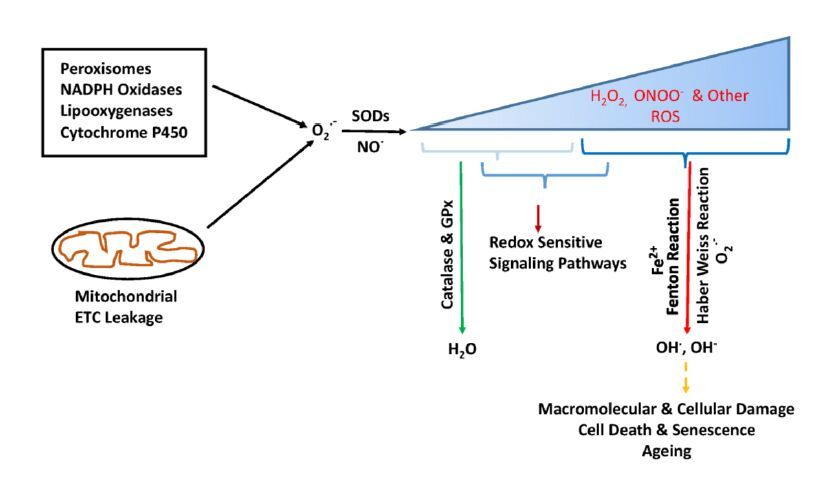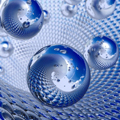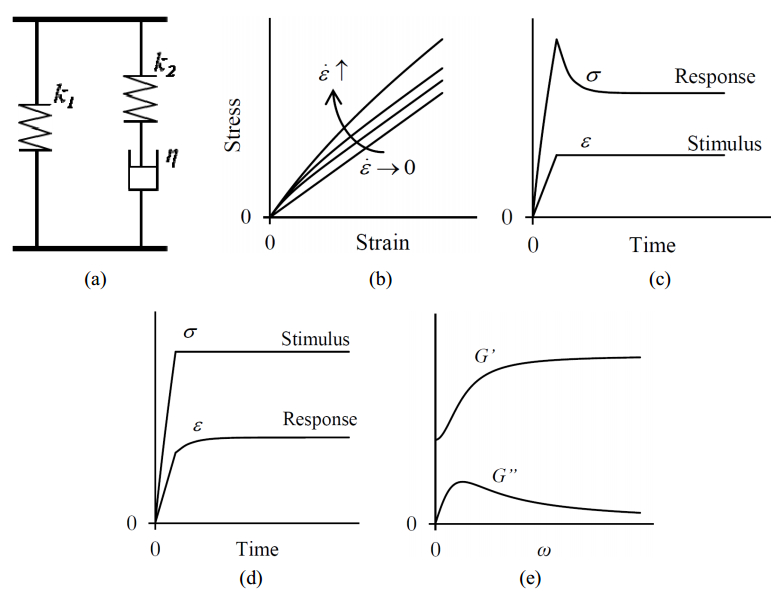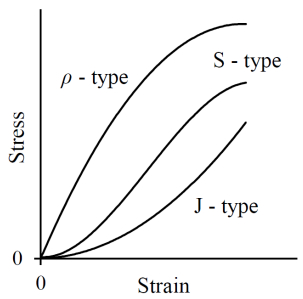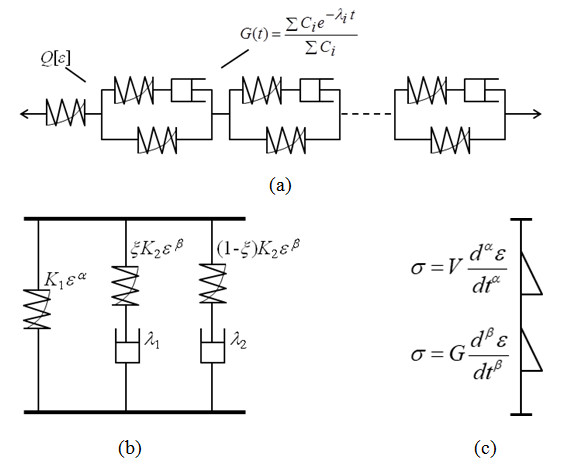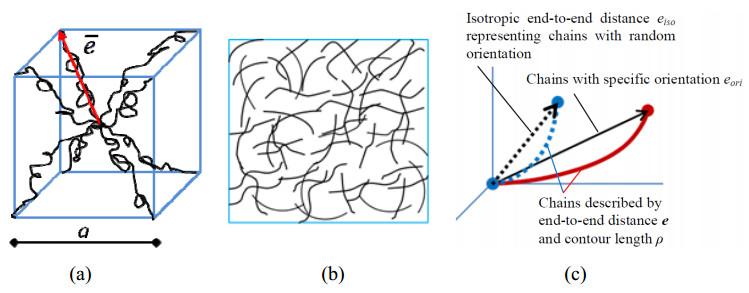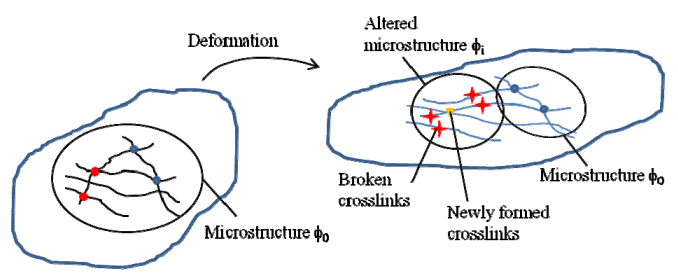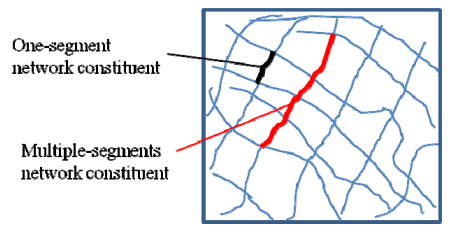| 1.
|
Anastasya Birger, Israel Ben-Dor, Miri Ottolenghi, Tikva Turetsky, Yaniv Gil, Sahar Sweetat, Liat Perez, Vitali Belzer, Natania Casden, Debora Steiner, Michal Izrael, Eithan Galun, Eva Feldman, Oded Behar, Benjamin Reubinoff,
Human iPSC-derived astrocytes from ALS patients with mutated C9ORF72 show increased oxidative stress and neurotoxicity,
2019,
50,
23523964,
274,
10.1016/j.ebiom.2019.11.026
|
|
| 2.
|
Ana T. Maduro, Carla Luís, Raquel Soares,
Ageing, cellular senescence and the impact of diet: an overview,
2021,
6,
2444-8664,
e120,
10.1097/j.pbj.0000000000000120
|
|
| 3.
|
Vijayasree V. Giridharan, Vengadeshprabhu Karupppagounder, Somasundaram Arumugam, Yutaka Nakamura, Ashrith Guha, Tatiana Barichello, Joao Quevedo, Kenichi Watanabe, Tetsuya Konishi, Rajarajan A. Thandavarayan,
3,4-Dihydroxybenzalacetone (DBL) Prevents Aging-Induced Myocardial Changes in Senescence-Accelerated Mouse-Prone 8 (SAMP8) Mice,
2020,
9,
2073-4409,
597,
10.3390/cells9030597
|
|
| 4.
|
Kelly Shirley Ross, Carine Smith,
d-galactose: a model of accelerated ageing sufficiently sensitive to reflect preventative efficacy of an antioxidant treatment,
2020,
21,
1389-5729,
745,
10.1007/s10522-020-09891-x
|
|
| 5.
|
Hui Liu, Yang Jiang, Hui Guan, Feng Li, Dongxiao Sun‐Waterhouse, Yilun Chen, Dapeng Li,
Enhancing the antioxidative effects of foods containing rutin and α‐amino acids via the Maillard reaction: A model study focusing on rutin‐lysine system,
2020,
44,
0145-8884,
10.1111/jfbc.13086
|
|
| 6.
|
Hongqiao Zhang, Todd E. Morgan, Henry Jay Forman,
Age-related alteration in HNE elimination enzymes,
2021,
699,
00039861,
108749,
10.1016/j.abb.2020.108749
|
|
| 7.
|
Parisa Foroozandeh, Azlan Abdul Aziz, Morteza Mahmoudi,
Effect of Cell Age on Uptake and Toxicity of Nanoparticles: The Overlooked Factor at the Nanobio Interface,
2019,
11,
1944-8244,
39672,
10.1021/acsami.9b15533
|
|
| 8.
|
Marianna Kunrath-Lima, Marcelo Coutinho de Miranda, Andrea da Fonseca Ferreira, Camila Cristina Fraga Faraco, Mariane Izabella Abreu de Melo, Alfredo Miranda Goes, Michele Angela Rodrigues, Jerusa Araújo Quintão Arantes Faria, Dawidson Assis Gomes,
Phospholipase C delta 4 (PLCδ4) is a nuclear protein involved in cell proliferation and senescence in mesenchymal stromal stem cells,
2018,
49,
08986568,
59,
10.1016/j.cellsig.2018.05.011
|
|
| 9.
|
Carmen Martínez-Cué, Noemí Rueda,
Cellular Senescence in Neurodegenerative Diseases,
2020,
14,
1662-5102,
10.3389/fncel.2020.00016
|
|
| 10.
|
Stefi F. Lee, Rebecca Harris, Heather W. Stout-Delgado,
Targeted antioxidants as therapeutics for treatment of pneumonia in the elderly,
2020,
220,
19315244,
43,
10.1016/j.trsl.2020.03.002
|
|
| 11.
|
Mohammed Majrashi, Ayaka Fujihashi, Mohammed Almaghrabi, Maali Fadan, Eddie Fahoury, Sindhu Ramesh, Manoj Govindarajulu, Haley Beamon, Chastity N. Bradford, Olga Bolden‐Tiller, Muralikrishnan Dhanasekaran,
Augmented oxidative stress and reduced mitochondrial function in ageing goat testis,
2020,
6,
2053-1095,
766,
10.1002/vms3.296
|
|
| 12.
|
Hidetoshi Sugihara, Naomi Teramoto, Katsuyuki Nakamura, Takanori Shiga, Taku Shirakawa, Masafumi Matsuo, Masashi Ogasawara, Ichizo Nishino, Takashi Matsuwaki, Masugi Nishihara, Keitaro Yamanouchi,
Cellular senescence-mediated exacerbation of Duchenne muscular dystrophy,
2020,
10,
2045-2322,
10.1038/s41598-020-73315-6
|
|
| 13.
|
Rahul Saxena, Jyoti Batra,
2020,
9780128186985,
83,
10.1016/B978-0-12-818698-5.00008-0
|
|
| 14.
|
Kaitlin M Pearce, Imoh Okon, Christa Watson-Wright,
Induction of Oxidative DNA Damage and Epithelial Mesenchymal Transitions in Small Airway Epithelial Cells Exposed to Cosmetic Aerosols,
2020,
177,
1096-6080,
248,
10.1093/toxsci/kfaa089
|
|
| 15.
|
A. Yu. Ratushnyy, L. B. Buravkova,
Cell Senescence and Mesenchymal Stromal Cells,
2020,
46,
0362-1197,
85,
10.1134/S0362119720010132
|
|
| 16.
|
Slavica Dodig, Ivana Čepelak, Ivan Pavić,
Hallmarks of senescence and aging,
2019,
29,
18467482,
483,
10.11613/BM.2019.030501
|
|
| 17.
|
Perinur Bozaykut,
2019,
Chapter 10,
978-981-13-8272-7,
207,
10.1007/978-981-13-8273-4_10
|
|
| 18.
|
Qin-Li Wan, Xiaodie Fu, Xiao Meng, Zhenhuan Luo, Wenyu Dai, Jing Yang, Chongyang Wang, Hao Wang, Qinghua Zhou,
Hypotaurine promotes longevity and stress tolerance via the stress response factors DAF-16/FOXO and SKN-1/NRF2 in Caenorhabditis elegans,
2020,
11,
2042-6496,
347,
10.1039/C9FO02000D
|
|
| 19.
|
Koichiro Kawaguchi, Sang‐Eun Kim, Daijiro Sugiyama, Masataka Sugimoto, Mitsuo Maruyama,
Age‐associated alterations in murine dermis through inflammatory response with mitochondrial DNA deletions,
2019,
19,
1444-1586,
451,
10.1111/ggi.13635
|
|
| 20.
|
Qin-Li Wan, Xiaodie Fu, Wenyu Dai, Jing Yang, Zhenhuan Luo, Xiao Meng, Xiao Liu, Ruowei Zhong, Hengwen Yang, Qinghua Zhou,
Uric acid induces stress resistance and extends the life span through activating the stress response factor DAF-16/FOXO and SKN-1/NRF2,
2020,
12,
1945-4589,
2840,
10.18632/aging.102781
|
|
| 21.
|
Laxmi Rathor, Rakesh Pandey,
Age-induced diminution of free radicals by Boeravinone B in Caenorhabditis elegans,
2018,
111,
05315565,
94,
10.1016/j.exger.2018.07.005
|
|
| 22.
|
Blakelee R Kemp, Kenneth F Ferraro, David Le Couteur,
Are Biological Consequences of Childhood Exposures Detectable in Telomere Length Decades Later?,
2021,
76,
1079-5006,
7,
10.1093/gerona/glaa019
|
|
| 23.
|
Raguraman Vasantharaja, L. Stanley Abraham, Venkatraman Gopinath, D. Hariharan, K.M. Smita,
Attenuation of oxidative stress induced mitochondrial dysfunction and cytotoxicity in fibroblast cells by sulfated polysaccharide from Padina gymnospora,
2019,
124,
01418130,
50,
10.1016/j.ijbiomac.2018.11.104
|
|
| 24.
|
Kazuyuki Okamura, Takehiro Suzuki, Keiko Nohara,
Gestational arsenite exposure augments hepatic tumors of C3H mice by promoting senescence in F1 and F2 offspring via different pathways,
2020,
408,
0041008X,
115259,
10.1016/j.taap.2020.115259
|
|
| 25.
|
Sharmistha Karmakar, Ayan Datta,
Understanding the Reactivity of CO3·–and NO2·Radicals toward S-Containing and Aromatic Amino Acids,
2017,
121,
1520-6106,
7621,
10.1021/acs.jpcb.7b05186
|
|
| 26.
|
Dan Meyerstein,
2018,
9781119379256,
73,
10.1002/9781119379256.ch4
|
|
| 27.
|
Milan Gautam, Dae Hoon Park, Sung Jae Park, Kang Sik Nam, Geun Young Park, Jungho Hwang, Chul Soon Yong, Jong Oh Kim, Jeong Hoon Byeon,
Plug-In Safe-by-Design Nanoinorganic Antibacterials,
2019,
13,
1936-0851,
12798,
10.1021/acsnano.9b04939
|
|
| 28.
|
Abel Soto-Gamez, Wim J. Quax, Marco Demaria,
Regulation of Survival Networks in Senescent Cells: From Mechanisms to Interventions,
2019,
431,
00222836,
2629,
10.1016/j.jmb.2019.05.036
|
|
| 29.
|
Michio Hashimoto, Shahdat Hossain, Kentaro Matsuzaki, Osamu Shido, Katsumi Yoshino,
The journey from white rice to ultra-high hydrostatic pressurized brown rice: an excellent endeavor for ideal nutrition from staple food,
2020,
1040-8398,
1,
10.1080/10408398.2020.1844138
|
|
| 30.
|
P. I. Deryabin, A. V. Borodkina,
Reduced Efficiency of DNA Repair and Antioxidant Defense Promotes the Accumulation of DNA Damage during Cell Senescence,
2021,
15,
1990-519X,
532,
10.1134/S1990519X2106002X
|
|
| 31.
|
Sang-Nam Park, Ok Hee Lee,
Effects of Saccharomycopsis fibuligera Fermentation on the Antioxidant and Anti-inflammatory Activity of Kerria japonica Flower Extract,
2022,
54,
1738-3544,
209,
10.15324/kjcls.2022.54.3.209
|
|
| 32.
|
Karthik Balakrishnan,
Salt-driven chromatin remodeling associated with senescence dysregulation plays a crucial role in the carcinogenesis of gastric cancer subtype,
2023,
25,
24681113,
100262,
10.1016/j.comtox.2023.100262
|
|
| 33.
|
Francisco R. Avila, Ricardo A. Torres-Guzman, Karla C. Maita, John P. Garcia, Clifton R. Haider, Olivia A. Ho, Rickey E. Carter, Christopher J. McLeod, Charles J. Bruce, Antonio J. Forte,
Perceived Age as a Mortality and Comorbidity Predictor: A Systematic Review,
2023,
47,
0364-216X,
442,
10.1007/s00266-022-02932-5
|
|
| 34.
|
Johanna Pedroza-Diaz, Johanna C. Arroyave-Ospina, Sandra Serna Salas, Han Moshage,
Modulation of Oxidative Stress-Induced Senescence during Non-Alcoholic Fatty Liver Disease,
2022,
11,
2076-3921,
975,
10.3390/antiox11050975
|
|
| 35.
|
Xinchen Wang, Yoshitomo Honda, Jianxin Zhao, Hidetoshi Morikuni, Aki Nishiura, Yoshiya Hashimoto, Naoyuki Matsumoto,
Enhancement of Bone-Forming Ability on Beta-Tricalcium Phosphate by Modulating Cellular Senescence Mechanisms Using Senolytics,
2021,
22,
1422-0067,
12415,
10.3390/ijms222212415
|
|
| 36.
|
Nagarajan Maharajan, Gwang-Won Cho,
Camphorquinone Promotes the Antisenescence Effect via Activating AMPK/SIRT1 in Stem Cells and D-Galactose-Induced Aging Mice,
2021,
10,
2076-3921,
1916,
10.3390/antiox10121916
|
|
| 37.
|
Manas Ranjan Sahu, Linchi Rani, Rhea Subba, Amal Chandra Mondal,
Cellular senescence in the aging brain: A promising target for neurodegenerative diseases,
2022,
204,
00476374,
111675,
10.1016/j.mad.2022.111675
|
|
| 38.
|
Ju Chang-Chien, Jing-Long Huang, Hui-Ju Tsai, Shih-Ling Wang, Ming-Ling Kuo, Tsung-Chieh Yao,
Particulate matter causes telomere shortening and increase in cellular senescence markers in human lung epithelial cells,
2021,
222,
01476513,
112484,
10.1016/j.ecoenv.2021.112484
|
|
| 39.
|
Harold I. Zeliger,
2023,
9780323918909,
229,
10.1016/B978-0-323-91890-9.00002-7
|
|
| 40.
|
Gabriel S. Rocha, Marco Aurelio M. Freire, Karina M. Paiva, Rodrigo F. Oliveira, Bianca Norrara, Paulo Leonardo A.G. Morais, Lucidio C. Oliveira, Rovena Clara G.J. Engelberth, Jeferson S. Cavalcante, José Rodolfo L.P. Cavalcanti,
Effect of senescence on the tyrosine hydroxylase and S100B immunoreactivity in the nigrostriatal pathway of the rat,
2022,
124,
08910618,
102136,
10.1016/j.jchemneu.2022.102136
|
|
| 41.
|
Regina G. Daré, Elayaraja Kolanthai, Craig J. Neal, Yifei Fu, Sudipta Seal, Celso V. Nakamura, Sueli O. S. Lautenschlager,
Cerium Oxide Nanoparticles Conjugated with Tannic Acid Prevent UVB-Induced Oxidative Stress in Fibroblasts: Evidence of a Promising Anti-Photodamage Agent,
2023,
12,
2076-3921,
190,
10.3390/antiox12010190
|
|
| 42.
|
Marco Eigenfeld, Roland Kerpes, Thomas Becker,
Understanding the Impact of Industrial Stress Conditions on Replicative Aging in Saccharomyces cerevisiae,
2021,
2,
2673-6128,
10.3389/ffunb.2021.665490
|
|
| 43.
|
Andrea Figuer, Matilde Alique, Gemma Valera, Nadia Serroukh, Noemí Ceprían, Patricia de Sequera, Enrique Morales, Julia Carracedo, Rafael Ramírez, Guillermo Bodega,
Nuevos mecanismos implicados en el desarrollo de la enfermedad cardiovascular en la enfermedad renal crónica,
2023,
43,
02116995,
63,
10.1016/j.nefro.2022.03.002
|
|
| 44.
|
Ceyhan Hacioglu, Fatih Kar, Gungor Kanbak,
Reproductive Effects of Nicotinamide on Testicular Function and Structure in Old Male Rats: Oxidative, Apoptotic, Hormonal, and Morphological Analyses,
2021,
28,
1933-7191,
3352,
10.1007/s43032-021-00647-7
|
|
| 45.
|
Andrijana Lazic, Vanda Balint, Danijela Stanisavljevic Ninkovic, Mina Peric, Milena Stevanovic,
Reactive and Senescent Astroglial Phenotypes as Hallmarks of Brain Pathologies,
2022,
23,
1422-0067,
4995,
10.3390/ijms23094995
|
|
| 46.
|
Chunrong Li, Yuzhi Xu, Si-Yang Liu, Yanfei Zhang, Wen Yin, Zong Dai, Xiaoyong Zou,
Cancer cell identification by facile imaging of intracellular reductive substances with fluorescent nanosensor,
2021,
234,
00399140,
122650,
10.1016/j.talanta.2021.122650
|
|
| 47.
|
Natalie Kudlova, Juan Bautista De Sanctis, Marian Hajduch,
Cellular Senescence: Molecular Targets, Biomarkers, and Senolytic Drugs,
2022,
23,
1422-0067,
4168,
10.3390/ijms23084168
|
|
| 48.
|
Lucyna Kaszubowska, Jerzy Foerster, Zbigniew Kmieć,
NKT-like (CD3 + CD56+) cells differ from T cells in expression level of cellular protective proteins and sensitivity to stimulation in the process of ageing,
2022,
19,
1742-4933,
10.1186/s12979-022-00274-z
|
|
| 49.
|
Alam Khan, Tanjeena Zaman, Talukdar Mohammad Fahad, Tanjima Akther, Md Faruk Hasan, Tarannum Naz, Shuji Kishi,
Carbofuran affects cellular autophagy and developmental senescence through the impairment of Nrf2 signalling,
2022,
26,
1582-1838,
35,
10.1111/jcmm.16774
|
|
| 50.
|
Shantini Vijayabalan, Priya Madhavan,
2023,
9780323995214,
255,
10.1016/B978-0-323-99521-4.00004-0
|
|
| 51.
|
Garikapati Koteswara Rao, Venkata Krishna Kanth Makani, Jolly Janette Mendonza, Prajitha Mohandas Edathara, Nibedita Patel, Maresha Ramakrishna, Priyanka Cilamkoti, Jayashree Chiring Phukon, Jedy Jose, Utpal Bhadra, Manika Pal Bhadra,
Downregulation of BORIS/CTCFL leads to ROS‐dependent cellular senescence and drug sensitivity in
MYCN
‐amplified neuroblastoma
,
2022,
289,
1742-464X,
2915,
10.1111/febs.16309
|
|
| 52.
|
Pambu Lelo Aaron, Zakuani Luzinga Nadege, Fabrice Ndayisenga, Bongo Ngiala Gedeon,
2022,
Chapter 8,
978-1-83968-281-0,
10.5772/intechopen.100476
|
|
| 53.
|
Álvaro Morón, Ana Martín-González, Silvia Díaz, Juan Carlos Gutiérrez, Francisco Amaro,
Autophagy and lipid droplets are a defense mechanism against toxic copper oxide nanotubes in the eukaryotic microbial model Tetrahymena thermophila,
2022,
847,
00489697,
157580,
10.1016/j.scitotenv.2022.157580
|
|
| 54.
|
Łucja Justyna Walczak-Nowicka, Mariola Herbet,
Sodium Benzoate—Harmfulness and Potential Use in Therapies for Disorders Related to the Nervous System: A Review,
2022,
14,
2072-6643,
1497,
10.3390/nu14071497
|
|
| 55.
|
Siamak Tabibzadeh,
Resolving Geroplasticity to the Balance of Rejuvenins and Geriatrins,
2022,
13,
2152-5250,
1664,
10.14336/AD.2022.0414
|
|
| 56.
|
Genni Enza Marcovecchio, Francesca Ferrua, Elena Fontana, Stefano Beretta, Marco Genua, Ileana Bortolomai, Anastasia Conti, Davide Montin, Maria Teresa Cascarano, Sonia Bergante, Veronica D’Oria, Alessandro Giamberti, Donato Amodio, Caterina Cancrini, Adriano Carotti, Raffaella Di Micco, Ivan Merelli, Marita Bosticardo, Anna Villa,
Premature Senescence and Increased Oxidative Stress in the Thymus of Down Syndrome Patients,
2021,
12,
1664-3224,
10.3389/fimmu.2021.669893
|
|
| 57.
|
Magdalena Dabrowska, Agnieszka Kępczyńska, Katarzyna Goździk, Małgorzata Całka-Kresa, Marek Skoneczny, Zbigniew Zieliński, Maria Doligalska, Ewa Sikora, Vladimir Jakovljevic,
Novel Role of Mammalian Cell Senescence-Sustenance of Muscle Larvae of Trichinella spp,
2022,
2022,
1942-0994,
1,
10.1155/2022/1799839
|
|
| 58.
|
Oscar Echeagaray, Taeyong Kim, Alex Casillas, Megan Monsanto, Mark Sussman,
Transcriptional features of biological age maintained in human cultured cardiac interstitial cells,
2021,
113,
08887543,
3705,
10.1016/j.ygeno.2021.09.004
|
|
| 59.
|
Yeqing Hu, Qiguo Wu, Yulin Wang, Haibo Zhang, Xueying Liu, Hua Zhou, Tao Yang,
The molecular pathogenesis of triptolide-induced hepatotoxicity,
2022,
13,
1663-9812,
10.3389/fphar.2022.979307
|
|
| 60.
|
Tzu-Jung Yu, Jen-Yang Tang, Jun-Ping Shiau, Ming-Feng Hou, Chia-Hung Yen, Fu Ou-Yang, Chung-Yi Chen, Hsueh-Wei Chang,
Gingerenone A Induces Antiproliferation and Senescence of Breast Cancer Cells,
2022,
11,
2076-3921,
587,
10.3390/antiox11030587
|
|
| 61.
|
Olga Sonia León Fernández, Gabriel Takon Oru, Renate Viebahn-Hänsler, Gilberto López Cabreja, Irainis Serrano Espinosa, Elizabeth García Fernández,
Medical ozone arrests oxidative damage progression and regulates vasoactive mediator levels in elderly patients (60–70 years) with oxidative etiology diseases,
2022,
13,
1664-042X,
10.3389/fphys.2022.1029805
|
|
| 62.
|
Amirsasan Gorgzadeh, Paria Arab Amiri, Saman Yasamineh, Basim Kareem Naser, Khairia abdulrahman abdulallah,
The potential use of nanozyme in aging and age‐related diseases,
2024,
25,
1389-5729,
583,
10.1007/s10522-024-10095-w
|
|
| 63.
|
Idris Adewale Ahmed, Nor Hisam Zamakshshari, Maryam Abimbola Mikail, Ibrahim Bello, Md. Sanower Hossain,
Garcinia flavonoids for healthy aging: Anti-senescence mechanisms and cosmeceutical applications in skin care,
2025,
180,
0367326X,
106282,
10.1016/j.fitote.2024.106282
|
|
| 64.
|
Sihao Chen, Yuanqiang Jia, Yingying Wu, Feiyue Ren,
Anthocyanin and its Bioavailability, Health Benefits, and Applications: A Comprehensive Review,
2024,
40,
8755-9129,
3666,
10.1080/87559129.2024.2369696
|
|
| 65.
|
Siew Hwei Yap, Cheng Siang Lee, Nur Diyana Zulkifli, Darshinie Suresh, Kenji Hamase, Kumitaa Theva Das, Reena Rajasuriar, Kok Hoong Leong,
d-Amino acids differentially trigger an inflammatory environment in vitro,
2024,
56,
1438-2199,
10.1007/s00726-023-03360-8
|
|
| 66.
|
Hammad Ahmed, Talha Bin Fayyaz, Najeeb Khatian, Shumaila Usman, Yamna Khurshid, Bushra Sikandar, Uzair Nisar, Syed Abid Ali, Ghulam Abbas,
Phloroglucinol ameliorated methylglyoxal induced harmful effects in rats,
2024,
397,
0028-1298,
9023,
10.1007/s00210-024-03232-2
|
|
| 67.
|
Mariam Sami Abou-Dahech, Frederick E. Williams,
Aging, Age-Related Diseases, and the Zebrafish Model,
2024,
1,
3042-4518,
48,
10.3390/jdad1010004
|
|
| 68.
|
M. Sultan Khan, Anita Jagota,
Changing dynamics in daily rhythms of oxidative stress indicators in SCN and extra-SCN brain regions with aging in male Wistar rats,
2025,
26,
1389-5729,
10.1007/s10522-024-10150-6
|
|
| 69.
|
Suman Panda, Oishika Chatterjee, Gopeswar Mukherjee, Subhrangsu Chatterjee,
2023,
Chapter 5,
978-981-19-8519-5,
135,
10.1007/978-981-19-8520-1_5
|
|
| 70.
|
Faiza Mahmud, Drishty B. Sarker, Jonathan A. Jocelyn, Qing-Xiang Amy Sang,
Molecular and Cellular Effects of Microplastics and Nanoplastics: Focus on Inflammation and Senescence,
2024,
13,
2073-4409,
1788,
10.3390/cells13211788
|
|
| 71.
|
Andrea Figuer, Matilde Alique, Gemma Valera, Nadia Serroukh, Noemí Ceprían, Patricia de Sequera, Enrique Morales, Julia Carracedo, Rafael Ramírez, Guillermo Bodega,
New mechanisms involved in the development of cardiovascular disease in chronic kidney disease,
2023,
43,
20132514,
63,
10.1016/j.nefroe.2023.05.014
|
|
| 72.
|
Ahmed Mohammed Mahmood, Ahmed Ageeb Kassid, Hashim H. Al-Zuaini, Ghasak Kais Abd-Alhussain,
Canagliflozin exerts anti-inflammatory and antioxidant effects in the heart and skin tissues: Biochemical and histopathological assessment in a model of accelerated aging induced by D-galactose in mice,
2024,
71,
2603-557X,
1,
10.3897/pharmacia.71.e124801
|
|
| 73.
|
Cemal Orhan, Emre Sahin, Mehmet Tuzcu, Nurhan Sahin, Abdullah Celik, Sara Perez Ojalvo, Sarah Sylla, James R. Komorowski, Kazim Sahin,
Nicotinamide Riboside and Phycocyanin Oligopeptides Affect Stress Susceptibility in Chronic Corticosterone-Exposed Rats,
2023,
12,
2076-3921,
1849,
10.3390/antiox12101849
|
|
| 74.
|
Łukasz Zaręba, Katarzyna Piszczatowska, Karolina Dżaman, Karolina Soroczynska, Parham Motamedi, Mirosław Szczepański, Nils Ludwig,
The Relationship between Fine Particle Matter (PM2.5) Exposure and Upper Respiratory Tract Diseases,
2024,
14,
2075-4426,
98,
10.3390/jpm14010098
|
|
| 75.
|
Govindhan Thiruppathi, Amirthalingam Mohankumar, Duraisamy Kalaiselvi, Humayun Amir, Chinnuswamy Viswanathan, Palanisamy Sundararaj,
Anti-Aging and Neurorescue Effects of Loquat in Caenorhabditis elegans and Electrochemical Quantification of Dopamine Neurotransmitter,
2024,
4,
2692-1944,
1179,
10.1021/acsfoodscitech.4c00006
|
|
| 76.
|
Lei Wang, Jiahui Wang, Zhihui Yang, Yue Wang, Tiejian Zhao, Weisheng Luo, Tianjian Liang, Zheng Yang,
Traditional herbs: mechanisms to combat cellular senescence,
2023,
15,
1945-4589,
14473,
10.18632/aging.205269
|
|
| 77.
|
Burcu Turkoglu, Banu Mansuroglu,
Investigating the Effects of Chelidonic Acid on Oxidative Stress-Induced Premature Cellular Senescence in Human Skin Fibroblast Cells,
2024,
14,
2075-1729,
1070,
10.3390/life14091070
|
|
| 78.
|
Wenxin Wei, Tian Li, Jinlong Chen, Zhen Fan, Feng Gao, Zhibiao Yu, Yihao Jiang,
SIRT3/6: an amazing challenge and opportunity in the fight against fibrosis and aging,
2024,
81,
1420-682X,
10.1007/s00018-023-05093-z
|
|
| 79.
|
Alexandra Tijerina, Diego Fonseca, Carlos J. Aguilera-González, Michel Stéphane Heya, Nancy Martínez, Nydia Sánchez, Cristina Bouzas, Josep A. Tur, Rogelio Salas,
Plasma Antioxidant Capacity Is Related to Dietary Intake, Body Composition, and Stage of Reproductive Aging in Women,
2024,
13,
2076-3921,
940,
10.3390/antiox13080940
|
|
| 80.
|
Sang-Nam PARK, Ok Hee LEE,
Antioxidant and Anti-Inflammatory Activity of Brachythecium populeum Extract,
2023,
55,
1738-3544,
174,
10.15324/kjcls.2023.55.3.174
|
|
| 81.
|
Jelena Vekic, Kristine Stromsnes, Stefania Mazzalai, Aleksandra Zeljkovic, Manfredi Rizzo, Juan Gambini,
Oxidative Stress, Atherogenic Dyslipidemia, and Cardiovascular Risk,
2023,
11,
2227-9059,
2897,
10.3390/biomedicines11112897
|
|
| 82.
|
Boon-Kiat Lee, Pei Xu, Uma-Mageswary Mageswaran, Woo-Sik Jeong, Engku Ismail Engku-Husna, Kadir Muhammad-Nashriq, Svetoslav Dimitrov Todorov, Guoxia Liu, Yong-Ha Park, Siti Nurma Hanim Hadie, Min-Tze Liong,
Probiotic Improves Skin Oxidation, Elasticity, and Structural Properties in Aging Rats,
2023,
28,
2287-1098,
293,
10.3746/pnf.2023.28.3.293
|
|
| 83.
|
Ann B. Roskjær, Henrik M. Roager, Lars O. Dragsted,
D-Amino acids from foods and gut microbiota and their effects in health and disease,
2024,
40,
8755-9129,
3196,
10.1080/87559129.2024.2347472
|
|
| 84.
|
Priyansha Bhatia, Sushma Chaturvedi, Sonika Shrivastav, Md Sabir Alam,
New Aspects of the Medicinal Value of Cornsilk: A Review,
2025,
15,
22103155,
10.2174/0122103155272229240305111959
|
|
| 85.
|
Alexander Kalinin, Ekaterina Zubkova, Mikhail Menshikov,
Integrated Stress Response (ISR) Pathway: Unraveling Its Role in Cellular Senescence,
2023,
24,
1422-0067,
17423,
10.3390/ijms242417423
|
|
| 86.
|
Dongcheol Park, Seong Min Won, Hohjai Lee,
Enhanced Deoxygenation of Solvents via an Improved Inert Gas Bubbling Method with a Ventilation Pathway,
2024,
9,
2470-1343,
42915,
10.1021/acsomega.4c05786
|
|
| 87.
|
Zozo Outskouni, Christina Christodoulou, Andreas Goutas, Ioannis D. Kyriazis, Adamantini Paraskevopoulou, George P. Laliotis, Anthia Matsakidou, Athanasios Gogas, Varvara Trachana,
Cryptomphalus aspersa Egg Extract Protects against Human Stem Cell Stress-Induced Premature Senescence,
2024,
25,
1422-0067,
3715,
10.3390/ijms25073715
|
|
| 88.
|
Agata Henschke, Angelika Mielcarek, Bartosz Grześkowiak, Patrick M. Perrigue, Kaja Jaskot, Emerson Coy, Sergio Moya,
Cellular senescence and nanoparticle-based therapies: Current developments and perspectives,
2024,
13,
2191-9097,
10.1515/ntrev-2023-0211
|
|
| 89.
|
Afsaneh Javdani-Mallak, Iman Salahshoori,
Environmental pollutants and exosomes: A new paradigm in environmental health and disease,
2024,
925,
00489697,
171774,
10.1016/j.scitotenv.2024.171774
|
|
| 90.
|
Andrey Ratushnyy, Mariia Ezdakova, Diana Matveeva, Ekaterina Tyrina, Ludmila Buravkova,
Regulatory Effects of Senescent Mesenchymal Stem Cells: Endotheliocyte Reaction,
2024,
13,
2073-4409,
1345,
10.3390/cells13161345
|
|
| 91.
|
Gallage Chanuka P. Fernando, Ali R. Khansari, Lluis Tort,
Response to chronic crowding stress in shy and bold behavioral groups of male and female zebrafish,
2024,
327,
0363-6119,
R275,
10.1152/ajpregu.00041.2024
|
|
| 92.
|
Valeria Pizzuti, Francesca Paris, Pasquale Marrazzo, Laura Bonsi, Francesco Alviano,
Mitigating Oxidative Stress in Perinatal Cells: A Critical Step toward an Optimal Therapeutic Use in Regenerative Medicine,
2023,
13,
2218-273X,
971,
10.3390/biom13060971
|
|
| 93.
|
Anastasia Apodiakou, Saleh Alseekh, Rainer Hoefgen, Sarah J. Whitcomb,
Overexpression of SLIM1 transcription factor accelerates vegetative development in Arabidopsis thaliana,
2024,
15,
1664-462X,
10.3389/fpls.2024.1327152
|
|
| 94.
|
Rehana Rehman, Ihsan Nazurah Zulkipli, Haq Nawaz Khan,
2024,
9780443188077,
105,
10.1016/B978-0-443-18807-7.00007-7
|
|
| 95.
|
Kyung-Hyun Cho, Ashutosh Bahuguna, Dae-Jin Kang, Ji-Eun Kim,
Prolonged Supplementation of Ozonated Sunflower Oil Bestows an Antiaging Effect, Improves Blood Lipid Profile and Spinal Deformities, and Protects Vital Organs of Zebrafish (Danio rerio) against Age-Related Degeneration: Two-Years Consumption Study,
2024,
13,
2076-3921,
123,
10.3390/antiox13010123
|
|
| 96.
|
Sophia A. Mahoney, Ravinandan Venkatasubramanian, Mary A. Darrah, Katelyn R. Ludwig, Nicholas S. VanDongen, Nathan T. Greenberg, Abigail G. Longtine, David A. Hutton, Vienna E. Brunt, Judith Campisi, Simon Melov, Douglas R. Seals, Matthew J. Rossman, Zachary S. Clayton,
Intermittent supplementation with fisetin improves arterial function in old mice by decreasing cellular senescence,
2024,
23,
1474-9718,
10.1111/acel.14060
|
|
| 97.
|
Sajad Alavimanesh, Negar Nayerain Jazi, Maedeh Choubani, Farzane Saeidi, Hamed Afkhami, Aref Yarahmadi, Hossein Ronaghi, Pouria Khani, Mohammad Hossein Modarressi,
Cellular senescence in the tumor with a bone niche microenvironment: friend or foe?,
2025,
25,
1591-9528,
10.1007/s10238-025-01564-8
|
|
| 98.
|
2021,
10.12794/metadc1808366
|
|
| 99.
|
Abass Toba Anifowoshe, Md Noor Akhtar, Abisola Majeed, Asem Sanjit Singh, Toyyibah Funmilayo Ismail, Upendra Nongthomba,
Microplastics: A threat to Fetoplacental unit and Reproductive systems,
2025,
22147500,
101938,
10.1016/j.toxrep.2025.101938
|
|
| 100.
|
Polina Arsenteva, Mohamed Amine Benadjaoud, Hervé Cardot,
Joint clustering with alignment for temporal data in a one-point-per-experiment setting,
2025,
1061-8600,
1,
10.1080/10618600.2025.2467645
|
|
| 101.
|
Serafina Pacilio, Sara Lombardi, Roberta Costa, Francesca Paris, Giovannamaria Petrocelli, Pasquale Marrazzo, Giovanna Cenacchi, Francesco Alviano,
Role of Perinatal Stem Cell Secretome as Potential Therapy for Muscular Dystrophies,
2025,
13,
2227-9059,
458,
10.3390/biomedicines13020458
|
|
| 102.
|
Harald Kühnel, Markus Seiler, Barbara Feldhofer, Atefeh Ebrahimian, Michael Maurer,
Ganoderma lucidum Extract Modulates Gene Expression Profiles Associated with Antioxidant Defense, Cytoprotection, and Senescence in Human Dermal Fibroblasts: Investigation of Quantitative Gene Expression by qPCR,
2025,
47,
1467-3045,
130,
10.3390/cimb47020130
|
|
| 103.
|
Zozo Outskouni, Stavroula Prapa, Andreas Goutas, Eleftheria Klagkou, Giannis Vatsellas, Artemis Kosta, Varvara Trachana, Ioanna Papathanasiou,
Comparative analysis of transcriptomic profiles of mesenchymal stem cells at the onset of senescence and after exposure to acute exogenous oxidative stress,
2025,
0006291X,
151506,
10.1016/j.bbrc.2025.151506
|
|
| 104.
|
Novi Silvia Hardiany, Daniya Qanita Amani, Jasmine Virginia Anjani, Prima Christin Natalia, Rheina Tamara Tarigan,
Oxidative stress and antioxidant status mong the elderly in Jakarta,
2024,
7,
2654-3222,
177,
10.32889/actabioina.177
|
|
| 105.
|
Huan Niu, Yan-Nan Wang, Yu Ding, Yu-Qing Lin, Jian Qin, Jian-Cheng Wang,
Stem cell-based therapeutic strategies for liver aging,
2025,
25425684,
10.1016/j.livres.2025.04.003
|
|
| 106.
|
Yi Wang, Feng-Qiu Zhang, Zhi-Peng Fan, Xin-Ling Zhu, Wan-Hao Yan, Xiu-Li Zhang,
WDR36 inhibits the osteogenic differentiation and migration of periodontal ligament stem cells,
2025,
17,
1948-0210,
10.4252/wjsc.v17.i2.99132
|
|
| 107.
|
Gong-Hua Li, Yu-Hong Li, Qin Yu, Qing-Qing Zhou, Run-Feng Zhang, Chong-Jun Weng, Ming-Xia Ge, Qing-Peng Kong,
Unraveling the metabolic heterogeneity and commonality in senescent cells using systems modeling,
2025,
4,
2755-1733,
10.1093/lifemedi/lnaf003
|
|
| 108.
|
Rahul Saxena, Suyash Saxena, Ajit Pal Singh,
2025,
chapter 7,
9798369379196,
257,
10.4018/979-8-3693-7919-6.ch007
|
|
| 109.
|
Surya Nath Pandey, Muhammad Afzal, Jyoti Uikey, Subbulakshmi Ganesan, Swati Mishra, Pooja Bansal, Imran Kazmi, Sami I. Alzarea, Waleed Hassan Almalk, Kavita Goyal, Gaurav Gupta, Mohit Rana,
ATM and p53 in aging and cancer: a double-edged sword in genomic integrity,
2025,
26,
1389-5729,
10.1007/s10522-025-10249-4
|
|
| 110.
|
Samira Rastgoo, Katayoun Pourvali, Seyed Ahmad Raeissadat, Ghazaleh Eslamian, Hamid Zand,
Co-administration of vitamin D and N-acetylcysteine to modulate immunosenescence in older adults with vitamin D deficiency: a randomized clinical trial,
2025,
16,
1664-3224,
10.3389/fimmu.2025.1570441
|
|
| 111.
|
Tajwar Alam, Sanaullah Jalil, Ghulam Jilani, Arshad Nawaz Chaudhry, Zia Ul-Haq, Iram Naz, Muhammad Abbas Khan, Xinghong Yang, Marian Brestic, Milan Skalicky, Ayman El Sabagh,
Enhancing crop resilience to water stress through iron nanoparticles: A critical review of applications and implications,
2025,
16,
2667064X,
100905,
10.1016/j.stress.2025.100905
|
|









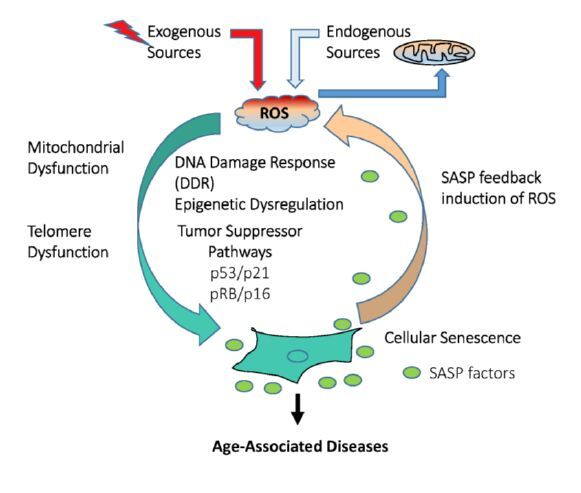
 DownLoad:
DownLoad: 